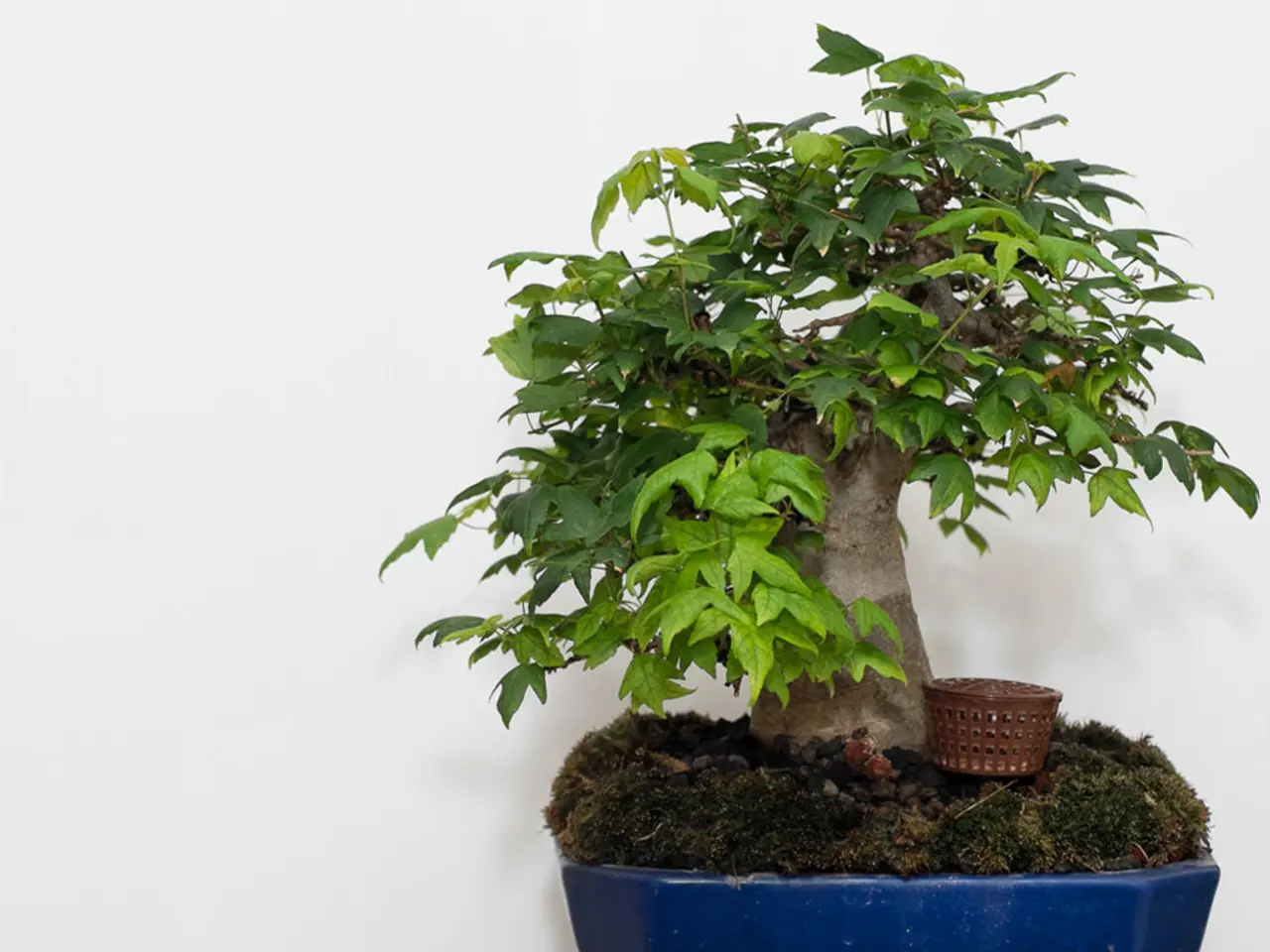Stimulating Minimized Bonsai Leaves: Achieving Balance through Reduction Techniques
In the captivating world of bonsai, achieving smaller, more refined leaves is an essential aspect of cultivating a visually stunning and balanced miniature tree. Here are some key techniques that bonsai enthusiasts can employ to refine leaf size and promote a harmonious balance.
**Defoliation (Leaf Cutting)**
One of the most effective methods for producing smaller, more refined leaves is defoliation. This process involves removing leaves, typically during late spring to early summer, when the tree is healthy and established. By doing so, the tree is encouraged to grow a second flush of new leaves that are smaller and more refined than the originals.
Defoliation also promotes back-budding closer to the trunk and branch bases, stimulating finer branching and a denser canopy. Partial defoliation, where leaves are removed from half the tree, is safer for beginners, reducing shock to the tree while still promoting leaf size reduction and new growth.
It is crucial to remember that defoliation should only be done on lignified (woody, mature) branches with a robust root system that hasn’t been recently disturbed by root pruning or repotting. Combining defoliation with pruning and wiring after leaf removal can help refine the branch structure and overall shape of the bonsai.
**Pruning**
Regular maintenance pruning, trimming branches and shoots, is essential for keeping the tree’s shape intact and encouraging the development of smaller leaves and finer branching. Structural pruning, which focuses on removing larger branches to establish the basic framework of the tree’s form, is more intense and should be performed with care to preserve the tree’s health and aesthetic appeal.
**Pinching**
Pinching, the act of removing the tips of new shoots by hand, encourages the growth of buds lower down the branch, leading to finer branching and denser foliage. This process contributes to smaller leaf size indirectly by promoting a compact growing habit.
**Influence on Overall Balance and Aesthetic Appeal**
Achieving smaller leaves is not only about aesthetics but also about maintaining proportion and visual harmony. Smaller leaves enhance the illusion of a mature, full-sized tree in miniature form, making the bonsai look more natural and balanced.
Refined branching and silhouette are also crucial factors. Techniques that reduce leaf size improve ramification, resulting in a denser, more intricate branch structure that adds visual interest and complexity. The combination of smaller leaves, careful pruning, wiring, and branch positioning creates a balanced silhouette that evokes the natural growth of a full-sized tree, contributing to the bonsai’s artistic value.
In conclusion, defoliation is the most effective technique for producing smaller, more refined leaves, supported by pruning and pinching to refine structure and density. Together, these methods maintain the bonsai’s visual harmony and help achieve the aesthetic ideal of a natural, aged, and proportionate miniature tree.
[1] Bonsai Techniques: Fundamentals, Kenjiro Soga and Takashi Murata [2] Bonsai: The Art of Miniature Trees, John Naka [3] Bonsai: The Complete Guide, David J. Hess
*Note: This article is intended to provide an overview of techniques for achieving smaller, more refined leaves in bonsai trees. For a comprehensive understanding, it is recommended to consult the resources listed or seek guidance from a bonsai expert.*
In the realm of bonsai, home-and-garden enthusiasts can employ defoliation and pruning to cultivate smaller, more refined leaves. Defoliation, particularly during spring, encourages a new flush of smaller leaves, while pruning maintains the tree's shape and promotes finer branching. These techniques, coupled with pinching and careful manipulation of the branch structure, contribute to a harmonious and balanced bonsai-home-garden lifestyle.




